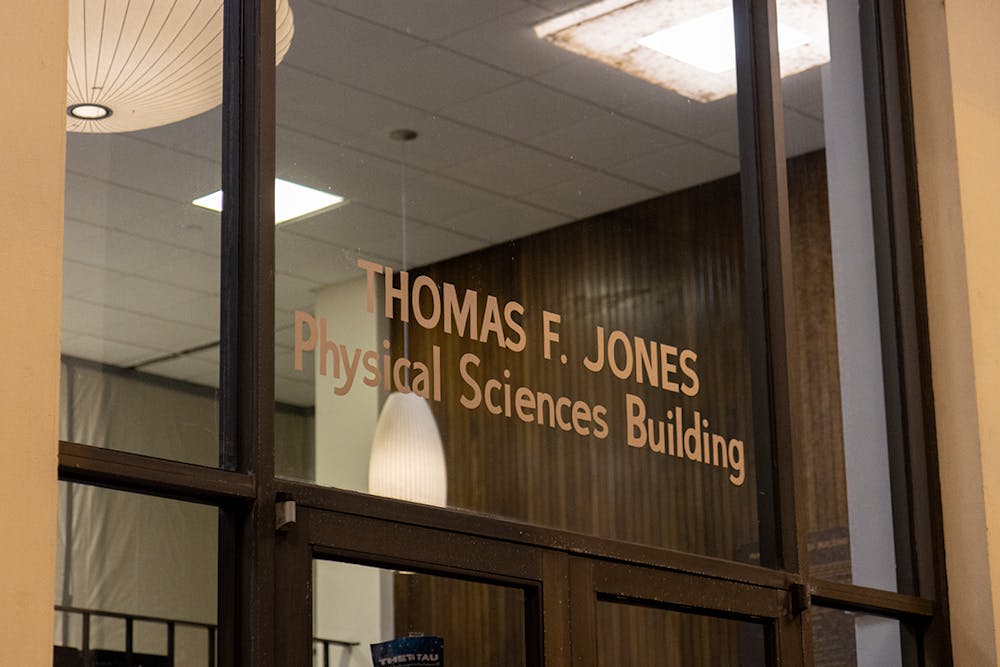Considering the time period in which Jones Physical Science Center was built, it shouldn’t be a surprise two of the building's floors don't have a women’s bathroom. However, it remains unchanged today, which is disadvantageous to women in STEM and harmful to the scientific community on campus.
This lack of equitable facilities for women is not only something deeply problematic for today's students, but something that will challenge future endeavors for women trying to enter STEM for decades if not resolved.
According to USC’s Digital Collections, the physical sciences building was completed in 1967 and signified USC’s "emergence as a science research center." However, it is hardly groundbreaking today, as the basement and second floor of the Jones building only have men’s restrooms.

A lack of inclusion for women in STEM has become a known societal issue, and it is disappointing a university with such a progressive creed isn't adequately advocating for women in the field.
Jaclyn Wong, a professor in USC’s Department of Sociology with a graduate certificate in gender and sexuality studies, researches dual career couples, including people working in STEM fields.
According to Wong, in this instance gender inequality is physically being built into the space of our society that is not equitable for women, and this absence of facilities seems to come from an assumption that women don’t work in the sciences.
To acknowledge these issues, one must look at the root of the problem: Universities perpetuate the stereotype that women are absent in STEM fields.
These sorts of discrepancies may be damaging to women seeking to join STEM, as studying in a male-dominated field in conjunction with attending a school lacking in facilities for women would make it difficult for someone to want to continue in the field, Wong said.
The effects of discouraging women to enter STEM careers would be detrimental to the sciences.
“I think that is consequential to the way that science unfolds as a field, where we don’t get as many diverse perspectives,” Wong said.
The lack of women in STEM also causes long-term deficits to the field. Stagnant research is hard to avoid if everybody in the field comes from the same demographic – no new stances or issues can be explored, which narrows the number of beneficial discoveries made.
A lack of bathrooms for women in the nucleus of science buildings also facilitates a domino effect, producing long-term preventative measures against women entering science fields. Such effects, Wong said, are events such as women who naively follow in their predecessors' footsteps — women students who have previously left from the program for reasons out of their control — find themselves "lacking role models and mentors," discouraging any tenacity to enter STEM.
This detail represents something bound to a broader culture which perpetuates gender inequality here on campus. It summarizes the root of USC's problem, and it represents a prevalence of presumably simple issues that are necessary for the university to address.
The lack of opportunity for women vying after a place in the STEM field is an issue that has been long addressed and blatantly ignored. In order to adequately combat this issue and promote equality in the sciences, we must channel more resources toward the problem and no longer ignore such a drastic issue.
"Put your money where your mouth is, if it’s important to have women represented in the sciences, let’s go ahead and make changes to our buildings to reflect the fact that men and women work here and might need access to bathrooms no matter what floor they’re on,” Wong said.
USC's Carolinian Creed states, “I will demonstrate concern for others, their feelings, and their need for the conditions which support their work and development.” To fully practice its own rules and honor its creed, the implementation of equal facilities for all genders in all buildings is vital, especially when students' futures are in the hands of their university.

